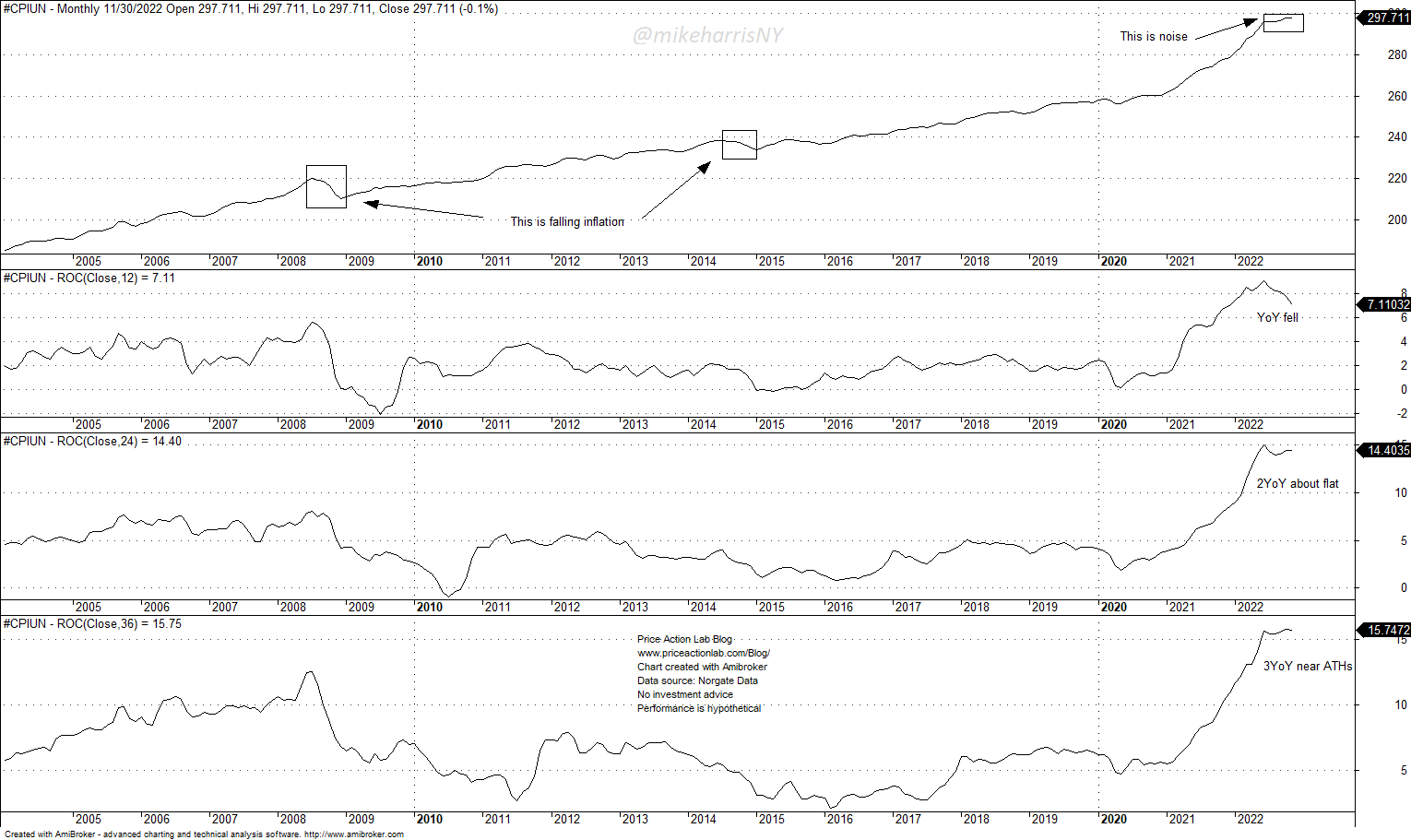Based on the latest CPI release, what fell is year-over-year inflation or the 12-month rate of change of the Consumer Price Index. But different lookback periods paint different pictures depending on their length.
The YoY change of CPI is just one measure of inflation that measures the speed or the rate-of-change of CPI over the previous 12 months. According to the latest release, the 12-month rate of change was 7.1%.
However, the choice of a 12-month rolling period for measuring the speed of inflation is arbitrary. Different lookbacks can be used, for example, 24-month or 36-month periods.
Ultimately, it is the CPI level that matters. You only get materially lower inflation when there is deflation; excuse me for the tautology, but it makes sense.
These are depicted in the chart below.
Although the 12-month rate-of-change of the CPI shows a reversal pattern, the 24-month is consolidating, and the 36-month is still on an uptrend.
Choose your measure of inflation measure then, but remember, you are not paying for speed but for the position, the actual CPI value. The current pattern is noise, as compared to deflationary periods in 2008 and 2014.
All sorts of narratives can be composed using rate-of-changes. What matters is the trend of the underline series, and unfortunately, it is up.
For inflation to drop, a deflationary period is required. The drop will be “transitory” because inflation is a multiplicative process, similar to the process that drives stock returns.
All past inflationary periods stay forever in the index. The same is true for past deflationary periods. Despite the 2008 deflation, the CPI has increased about 36% from its 2007 highs.
No one should be surprised why housing, cost of living, tuition, medical costs, etc. have increased.
Can income increases make up for these losses? This is an entirely different game that gives rise to more narratives.
Is there an alternative? I have no idea because we have been programmed to think in a subspace of possibilities where there is none.
The conclusion: ‘Inflation is falling” is a narrative. The numbers say otherwise.
Disclaimer: The premium articles are provided for informational purposes only and do not constitute investment advice or actionable content. We do not warrant the accuracy, completeness, fitness, or timeliness for any particular purposes of the premium articles. Under no circumstances should the premium articles be treated as financial advice. The author of this website is not a registered financial adviser. The past performance of any trading system or methodology is not necessarily indicative of future results. . Read the full disclaimer here.
Charting and backtesting program: Amibroker. Data provider: Norgate Data








